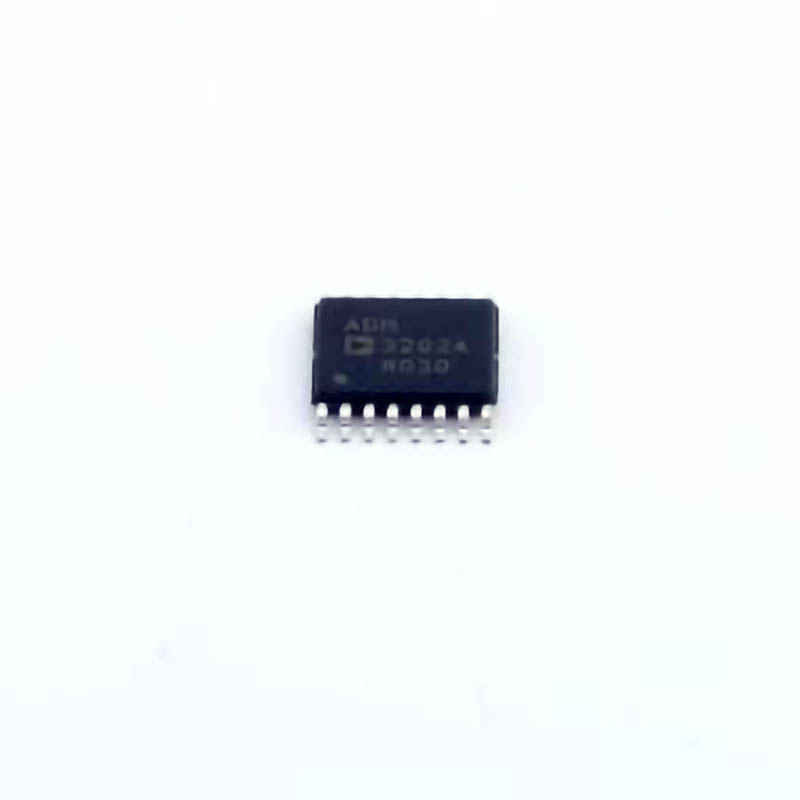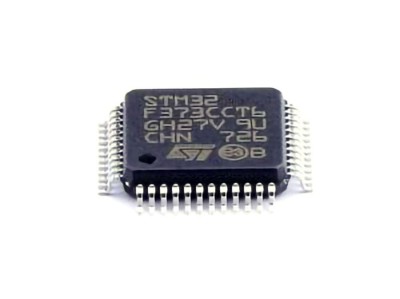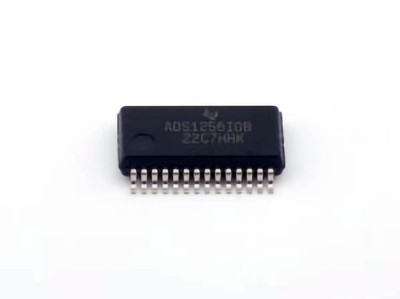
This article explores the application and debugging techniques of the ADM3202ARUZ in RS-232 interface design. The ADM3202ARUZ, a robust and versatile RS-232 transceiver , offers unique advantages for designers. This guide provides in-depth insights into its functionalities, practical application in interface design, and the debugging strategies to ensure a seamless implementation in various Communication systems.
ADM3202ARUZ, RS-232, Interface Design, Debugging Techniques, Transceiver, Signal Conversion, Serial Communication, Embedded Systems, Communication Protocols, Design Tips.
Understanding the ADM3202ARUZ and Its Role in RS-232 Interface Design
The ADM3202ARUZ is a high-performance RS-232 transceiver that plays a pivotal role in converting voltage levels between logic circuits and RS-232 communication systems. RS-232 (Recommended Standard 232) is a serial communication standard commonly used for short-distance communication between devices such as computers, embedded systems, and modems. The ADM3202ARUZ is designed to provide high-speed communication with low Power consumption, making it ideal for a wide range of applications, including industrial automation, consumer electronics, and data acquisition systems.
Overview of the ADM3202ARUZ Transceiver
The ADM3202ARUZ is part of Analog Devices’ family of integrated circuits designed specifically to interface with the RS-232 communication standard. This IC converts the voltage levels between TTL or CMOS logic levels and RS-232 voltage levels, enabling devices that operate on different voltage standards to communicate with each other. The ADM3202ARUZ supports up to 115.2 kbps data rates and operates with a 3.3V or 5V logic supply, offering flexibility for modern low-power designs.
One of the key features of the ADM3202ARUZ is its ability to drive RS-232 lines with a full range of voltage levels, even with minimal power consumption. The transceiver ensures reliable communication, even over longer distances, by providing robust signal conversion that mitigates noise and ensures data integrity.
Key Features of the ADM3202ARUZ
Low Power Consumption: The ADM3202ARUZ operates with low quiescent current, making it suitable for battery-powered applications.
Full RS-232 Voltage Levels: The transceiver supports the full range of voltage levels required by the RS-232 standard, including +12V and -12V for signal transmission and reception.
High-Speed Data Transmission: Capable of handling up to 115.2 kbps data rates, the ADM3202ARUZ is ideal for applications requiring fast data exchange.
Small Package Size: With its small footprint (a 16-lead TSSOP package), it is suitable for compact embedded system designs where space is limited.
Built-in Protection: The ADM3202ARUZ integrates overvoltage protection and short-circuit protection, providing additional robustness in the system.
The Importance of RS-232 in Modern Communication
Although RS-232 is considered an older standard compared to more modern interfaces like USB or Ethernet, it is still widely used in various industries. RS-232 offers simplicity, reliability, and ease of implementation, especially in legacy systems and embedded devices. The ADM3202ARUZ ensures that RS-232 remains relevant by providing efficient and reliable voltage conversion between devices operating on different logic levels.
In embedded systems, where microcontrollers or microprocessors often work at low-voltage CMOS or TTL logic levels, the ADM3202ARUZ allows seamless interfacing with legacy RS-232 devices such as serial ports on computers, industrial controllers, or GPS module s. This transceiver becomes the bridge between modern embedded designs and legacy serial devices, ensuring that communication is both fast and reliable.
Application Scenarios of the ADM3202ARUZ in RS-232 Interface Design
Embedded Systems Communication:
The ADM3202ARUZ is commonly used in embedded systems for serial communication. For example, when a microcontroller with a 3.3V or 5V logic supply needs to communicate with an RS-232-based peripheral (such as a sensor or modem), the ADM3202ARUZ provides the necessary voltage level conversion to ensure proper data transmission and reception.
Industrial Automation:
In industrial automation systems, RS-232 is often used for communication between devices like programmable logic controllers (PLCs), human-machine interfaces (HMIs), and remote sensors. The ADM3202ARUZ allows the PLC or HMI with TTL or CMOS logic levels to communicate seamlessly with legacy RS-232-based devices, enhancing system interoperability.
Serial Communication in Test and Measurement Equipment:
Many test and measurement instruments use RS-232 to interface with a computer or data logger for data collection and analysis. By incorporating the ADM3202ARUZ, these systems can continue to use RS-232 while maintaining compatibility with modern low-voltage logic circuits.
Typical RS-232 Communication Design
When designing an RS-232 interface with the ADM3202ARUZ, the most critical task is to ensure proper voltage level conversion between the logic level signals and the RS-232 signals. The ADM3202ARUZ handles this conversion, allowing for reliable data transmission.
An RS-232 interface typically consists of:
TX (Transmit) and RX (Receive) Lines: These are the primary communication lines. The ADM3202ARUZ converts the logic-level signals from the microcontroller’s TX and RX lines to the voltage levels required by the RS-232 standard.
Control Signals: In addition to TX and RX, RS-232 typically uses additional control lines like RTS (Request to Send), CTS (Clear to Send), DTR (Data Terminal Ready), and DSR (Data Set Ready). These signals are also handled by the ADM3202ARUZ for full-duplex communication.
The design process involves connecting the ADM3202ARUZ’s TX/RX lines to the corresponding TX/RX pins of the embedded system or microcontroller. The control signals can also be routed through the transceiver if required for handshake or flow control purposes.
Debugging Techniques and Best Practices for the ADM3202ARUZ in RS-232 Interface Design
Effective debugging is essential for ensuring that the RS-232 communication system functions correctly. Even though the ADM3202ARUZ simplifies many aspects of interfacing with RS-232 devices, designers may still encounter challenges that need to be addressed systematically. This section provides a comprehensive guide to common debugging techniques, troubleshooting strategies, and best practices.
Common RS-232 Interface Issues
Voltage Level Mismatch:
One of the most common problems when designing RS-232 interfaces is ensuring that the voltage levels between different devices are compatible. The ADM3202ARUZ addresses this issue by converting the logic-level signals to the appropriate RS-232 voltage levels. However, if the system is not designed correctly, it may result in incorrect voltage levels, leading to communication errors.
Solution: Double-check the voltage level requirements for both the transmitting and receiving devices. Use an oscilloscope to monitor the TX and RX lines to confirm that the voltage levels are within the acceptable range for RS-232 (typically between ±12V).
Signal Integrity Issues:
Signal degradation can occur due to long cable lengths, poor quality cables, or electromagnetic interference ( EMI ). These issues can lead to data corruption or loss of communication.
Solution: Ensure that the wiring is properly shielded and that cables are as short as possible. If necessary, use line drivers or repeaters to boost the signal strength over long distances.
Flow Control Problems:
RS-232 supports hardware flow control through RTS/CTS signals. Improper configuration or malfunction of these control signals can result in data loss or miscommunication.
Solution: Verify that the RTS/CTS lines are correctly wired and that both devices are configured to use hardware flow control. If software flow control is used, make sure the appropriate settings are enabled on both sides of the communication link.
Baud Rate Mismatch:
RS-232 communication requires both devices to operate at the same baud rate. A mismatch in baud rates can cause the data to be transmitted or received incorrectly.
Solution: Ensure that both devices are configured to use the same baud rate, parity, and stop bits. This can often be configured through software or through jumper settings on the devices.
Debugging with Oscilloscopes and Logic Analyzers
When debugging RS-232 communications, using an oscilloscope or a logic analyzer is essential. An oscilloscope can be used to view the waveform of the signals on the TX and RX lines, allowing you to identify issues like incorrect voltage levels or signal noise. A logic analyzer can help you capture and analyze the communication patterns, making it easier to spot issues like timing mismatches, missing bits, or corrupted data.
Steps for Oscilloscope Debugging:
Set up the oscilloscope to capture the TX and RX lines.
Verify that the voltage levels conform to RS-232 standards (typically +12V and -12V for high and low signals).
Look for clean, square wave patterns, indicating reliable data transmission.
Check for irregularities, such as signal jitter, noise, or voltage spikes that may indicate issues with signal integrity.
Software Debugging Tips
Software also plays a crucial role in ensuring the correct operation of RS-232 communication systems. If you're using a microcontroller or a computer to communicate via RS-232, it’s essential to ensure that the correct UART (Universal Asynchronous Receiver/Transmitter) settings are used.
Software Settings to Check:
Baud Rate: Ensure that both the transmitter and receiver are set to the same baud rate.
Parity: Ensure that the parity setting matches on both ends of the communication.
Stop Bits: Verify that both devices use the same number of stop bits.
Flow Control: Ensure that any hardware or software flow control settings are consistent.
By systematically verifying both hardware and software configurations, you can resolve most issues that arise when implementing RS-232 interfaces with the ADM3202ARUZ.
Conclusion
The ADM3202ARUZ is an excellent solution for designing RS-232 interfaces, offering reliable signal conversion and compatibility with a wide range of devices. By understanding its key features, applications, and best practices for debugging, designers can ensure smooth, efficient communication between modern embedded systems and legacy RS-232 devices. Through careful attention to voltage levels, signal integrity, flow control, and software settings, engineers can overcome common issues and create robust communication systems for a variety of applications.
If you are looking for more information on commonly used Electronic Components Models or about Electronic Components Product Catalog datasheets, compile all purchasing and CAD information into one place.


